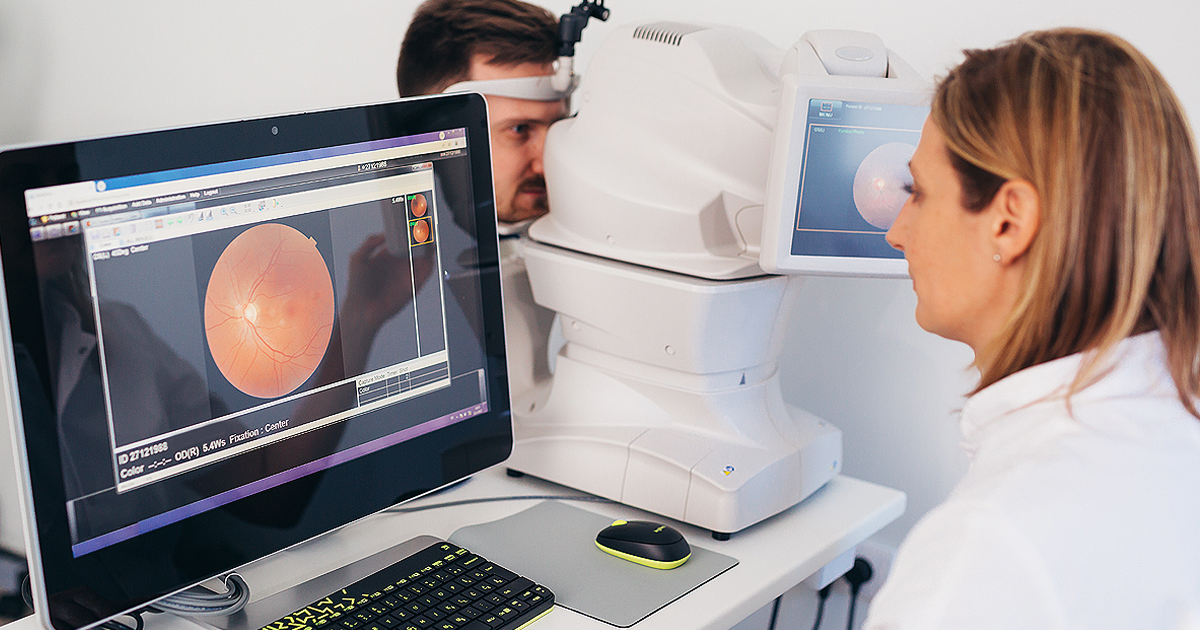It’s Back to School season, which means stocking up on supplies, making appointments for physicals and vaccinations and updating kids’ wardrobes with new sizes and the latest must-have looks.
Every parent or caregiver’s school-year preparations also should include scheduling a comprehensive eye exam for their child. Most associate that exam with determining whether kids need vision correction such as glasses or contact lenses, which is critically important. But a visit for a comprehensive eye exam also can reveal color blindness.
About 8% of the male population experiences some type of color blindness, as do 0.5% of females. (1) These numbers may seem small, but not for those who have color blindness. Consider: Nearly 80% of a child’s learning takes place through vision, and 1 in 4 kids has visual problems that could affect his or her ability to learn and succeed in school. (2) And that includes being able to distinguish differences in colors. Think back to kindergarten and grade school for a moment. So many materials and learning tools are based on color patterns and coding. A child with color vision deficiency can quickly be left behind.
As classes get under way, it’s a good time to make your employees aware of this key health issue, vision benefits and a very cool new tool to look for signs of color blindness.
What is Color Blindness?
The term “color blindness” is actually a bit of a misnomer. Most people who are considered color blind can see colors—they just see them a little differently. Colors might appear faded or dull, or 2 different colors could look very similar. This happens because the cones in the eye are missing 1 or more of the light-sensitive pigments. (3) Genetics are usually the cause, though age, certain diseases and medications also can play a part.
The 2 most common types of color blindness—called Deutan (green) and Protan (red)—don’t radically affect the way people see color. But the condition does make it hard to distinguish between reds and greens, particularly shades of a certain color. For example, something green could appear red or blue in some cases of color blindness. (1)
Someone with poor color vision might not know it. People with red-green deficiency, for instance, have learned to see the "right" color. They’ve been taught that tree leaves are green, so they identify the color they see as green. That’s why parents might not realize their children have a color deficiency issue until they experience some kind of confusion or misunderstanding. (3)
What Can You Do?
The American Optometric Association recommends that all kids have a comprehensive optometric exam before they start school. (3) Eye doctors will include a color blindness evaluation as part of the eye exam.
The most widely used screening test for color blindness is the Ishihara Color Vision Test. The test contains circular patterns composed of many dots of various colors, brightness and sizes. Within the circle is a number. A color-blind person either will be unable to see the number or will see a different number than the one seen by a person with normal color vision. (4)
Even though there is no cure for color blindness, people who have a color vision deficiency can take steps to make life a little easier. If illness or eye injury is the cause, treating these conditions may improve color vision. And wearing tinted eyeglasses or a red-tinted contact lens on 1 eye can improve the ability to differentiate between colors. (3)
Most people with color vision deficiency create workarounds to adapt to their situation, such as arranging and labeling clothes, furniture or other objects so they’re easier to recognize. (3)
Take our interactive color blindness quiz
Want to check your own color vision? EyeMed has created a fun, interesting way to learn more about color blindness. Visit our interactive quiz on EyeSiteOnWellness.com and share the link with your employees. Though it’s not a replacement for a comprehensive eye exam, it’s a quick and easy way to help uncover potential color deficiencies before seeing the eye doctor.
Also, if you offer EyeMed benefits to your employees, consider the extras EyeMed can provide through our KidsEyes program. For example, the plan covers 2 eye exams within the same benefit year. If the child’s vision changes within the same benefit year, a new pair of prescription lenses is covered. KidsEyes also offers discounts on replacement glasses and non-prescription sunglasses.
KidsEyes is just one of the ways EyeMed makes it easy and affordable for both adults and kids to protect their vision, excel at work and in school and enjoy life in living color all year.
BL-1808-771
1. “A Quick Introduction to Colorblindness,” We Are Colorblind, 2012, accessed Aug. 2, 2018.
2. “Awareness and Education,” Essilor Vision Foundation, accessed Aug. 2, 2018.
3. “Color Vision Deficiency,” American Optometric Association, accessed Aug. 2, 2018.
4. “Facts about Color Blindness,” National Eye Institute, 2015, accessed Aug. 2, 2018.




